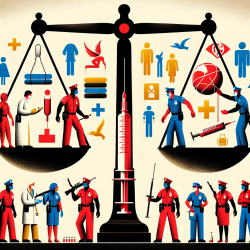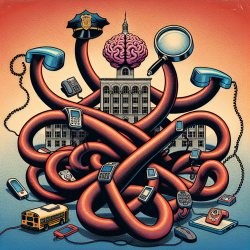Introduction
The role of gender in law enforcement, particularly in the context of health and human rights practices, is an underexplored area that can have significant implications for public health outcomes. The research article "The Role of Gender in the Health and Human Rights Practices of Police" provides valuable insights into how gender influences policing behaviors, especially concerning syringe confiscation and arrests related to syringe possession. This blog will explore the key findings of the study and discuss how practitioners can leverage these insights to improve their practices.
Key Findings
The study conducted in Tijuana, Mexico, revealed that female law enforcement officers (LEOs) were significantly less likely to confiscate syringes or arrest individuals for syringe possession compared to their male counterparts. This finding suggests that female officers may engage in policing behaviors that are more aligned with public health and human rights principles. Specifically, the study found:
- Female officers were half as likely to confiscate syringes as male officers.
- Female officers had marginally lower odds of arresting someone for syringe possession.
- Female officers demonstrated higher proficiency in certain occupational safety knowledge, such as asking suspects about sharp items before searches.
Implications for Practitioners
For practitioners in the field of speech-language pathology and related areas, these findings underscore the importance of considering gender dynamics in designing interventions and policies. Here are some ways practitioners can apply these insights:
- Training and Education: Develop training programs that emphasize the importance of gender-sensitive approaches in law enforcement. Encourage male officers to adopt practices that prioritize public health and human rights.
- Policy Development: Advocate for policies that promote the feminization of law enforcement as a means to enhance community trust and improve health outcomes.
- Research and Evaluation: Conduct further research to explore the underlying reasons for gender differences in policing behaviors and how these can be leveraged to improve public health interventions.
Encouraging Further Research
The study highlights the need for more research into the role of gender in policing, particularly in contexts where public health and human rights are at stake. Practitioners are encouraged to engage in collaborative research efforts to deepen our understanding of these dynamics and develop evidence-based interventions.
Conclusion
Understanding the role of gender in policing can lead to more effective interventions that align with health and human rights goals. By incorporating these insights into practice, practitioners can contribute to creating safer and healthier communities. To read the original research paper, please follow this link: The Role of Gender in the Health and Human Rights Practices of Police.










